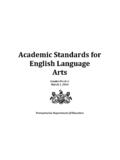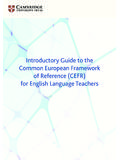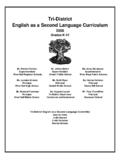Transcription of GCSE English Language - filestore.aqa.org.uk
1 SPECIMEN MATERIAL 1 GCSE English Language Paper 1 Explorations in creative reading and writing Mark Scheme 8700 Version 3 2 MARK SCHEME GCSE English Language PAPER 1 INTRODUCTION The information provided for each question is intended to be a guide to the kind of answers anticipated and is neither exhaustive nor prescriptive. All appropriate responses should be given credit. Where literary or linguistic terms appear in the Mark Scheme, they do so generally for the sake of brevity. Knowledge of such terms, other than those given in the specification, is not required. However, when determining the level of response for a particular answer, examiners should take into account any instances where the student uses these terms effectively to aid the clarity and precision of the argument.
2 Level of response marking instructions Level of response mark schemes are broken down into four levels . There are two, four, five or six marks in each level; dependent upon question. Please note: The sample responses in each Indicative Standard/Content Descriptor column are not intended to be complete, full or model answers. Instead, they are there as a guide, to provide you with part of an answer, an indicative extract of a response at the required level. If a student was to continue to develop a response at that standard, they would gain a mark at that level. Step 1 Determine a level Start at the lowest level of the mark scheme and use it as a ladder to see whether the answer meets the descriptor for that level. The descriptor for the level indicates the different qualities that might be seen in the student s answer for that level.
3 If it meets the lowest level then go to the next one and decide if it meets this level, and so on, until you have a match between the level descriptor and the answer. With practice and familiarity you will find that for better answers you will be able to quickly skip through the lower levels of the mark scheme. Step 2 Determine a mark Once you have assigned a level you need to decide on the mark. You may well need to read back through the answer as you apply the mark scheme to clarify points and assure yourself that the level and the mark are appropriate. The Skills Descriptors column indicates the different skills that students need to demonstrate in their answer for that level. To achieve full marks in a level, students should meet all of the skills descriptors in that level. Students achieving marks at the bottom of a level will ideally have met all of the skills descriptors of the previous level and at least one of the skills descriptors in that level.
4 An answer which contains nothing of relevance to the question must be awarded no marks. Copyright 2014 AQA and its licensors. All rights reserved. AQA retains the copyright on all its publications. However, registered schools/colleges for AQA are permitted to copy material from this booklet for their own internal use, with the following important exception: AQA cannot give permission to schools/colleges to photocopy any material that is acknowledged to a third party even for internal use within the centre. 3 MARK SCHEME GCSE English Language PAPER 1 SECTION A: READING Assessment Objectives AO1 Identify and interpret explicit and implicit information and ideas. Select and synthesise evidence from different texts. AO2 Explain, comment on and analyse how writers use Language and structure to achieve effects and influence readers, using relevant subject terminology to support their views.
5 AO3 Compare writers ideas and perspectives, as well as how these are conveyed, across two or more texts. AO4 Evaluate texts critically and support this with appropriate textual references. SECTION B: WRITING Assessment Objectives AO5 Communicate clearly, effectively and imaginatively, selecting and adapting tone, style and register for different forms, purposes and audiences. Organise information and ideas, using structural and grammatical features to support coherence and cohesion of texts. AO6 Candidates must use a range of vocabulary and sentence structures for clarity, purpose and effect, with accurate spelling and punctuation. (This requirement must constitute 20% of the marks for each specification as a whole). 4 MARK SCHEME GCSE English Language PAPER 1 Assessment Section A Objective AO1 AO2 AO3 N/A AO4 Section B AO5 AO6 5 MARK SCHEME GCSE English Language PAPER 1 Read again the first part of the Source from lines 1 to 7.
6 List four things from this part of the text about the weather in Cornwall. [4 marks] Give 1 mark for each point about the weather: responses must be true, and drawn only from lines 1 to 7 of the text responses must relate to the weather students may quote or paraphrase a paraphrased response covering more than one point should be credited for each point made though paraphrased responses must demonstrate evidence of identification of information that is specific to the focus of the question as required by AO1 responses that copy the whole section of the text from lines 1 to 7 verbatim should not be credited any marks as this does not provide any evidence of identification of information that is specific to the focus of the question as required by AO1. Note: The indicative content must not be treated as exhaustive and reference must be made to the selected section of the text.
7 AO1 Identify and interpret explicit and implicit information and ideas Select and synthesise evidence from different texts. This assesses bullet point 1 identify and interpret explicit and implicit information and ideas Indicative content; students may include: it was a cold day the weather had changed overnight there was a wind there was mist on the hills the air was clammy the air was cold it was raining Or any other valid responses that you are able to verify by checking the Source. 0 1 6 MARK SCHEME GCSE English Language PAPER 1 Look in detail at this extract from lines 8 to 18 of the Source: (Extract in question paper) How does the writer use Language here to describe the effects of the weather? You could include the writer s choice of: words and phrases Language features and techniques sentence forms.
8 [8 marks] AO2 Explain, comment on and analyse how writers use Language and structure to achieve effects and influence readers, using relevant subject terminology to support their views This question assesses Language ie: Words / Phrases / Language Features / Language Techniques / Sentence Forms Level Skills Descriptors How to arrive at a mark Indicative Standard This indicative standard is not a model answer, nor a complete response. Nor does it seek to exemplify any particular content. Rather, it is an indication of the standard for the level. Level 4 Detailed, perceptive analysis 7-8 marks Shows detailed and perceptive understanding of Language : Analyses the effects of the writer s choices of Language Selects a judicious range of textual detail Makes sophisticated and accurate use of subject terminology At the top of the level, a student s response will meet all of the skills descriptors.
9 The opening paragraph consists of a single, complex sentence perhaps reflecting the onward movement of the coach. The adjective exposed and the noun force , evoke the idea of vulnerability, danger, and how little control man has over the power of nature. The verb rocking , progresses the cumulative effect of the list of verbs, shaking , trembled , swayed leading to the simile, rocking between the high 0 2 7 MARK SCHEME GCSE English Language PAPER 1 At the bottom of the level, a student will have Level 3 and at least one of the skills descriptors. wheels like a drunken man suggesting the coach is lurching haphazardly, its movement out of control. Level 3 Clear, relevant explanation 5-6 marks Shows clear understanding of Language : Explains clearly the effects of the writer s choices of Language Selects a range of relevant textual detail Makes clear and accurate use of subject terminology At the top of the level, a student s response will meet all of the skills descriptors.
10 At the bottom of the level, a student will have Level 2 and at least one of the skills descriptors. The opening, complex sentence is long and so gives the effect of a never-ending storm. Then nouns like gusts and force are used to show the reader how unpredictable and strong the wind was. The effect of the wind on the coach is built up by the writer s use of verbs shaking , then trembled , then swayed . The word trembled makes it sound as if the coach is almost frightened of the weather. Level 2 Some, understanding and comment 3-4 marks Shows some understanding of Language : Attempts to comment on the effect of Language Selects some appropriate textual detail Makes some use of subject terminology, mainly appropriately At the top of the level, a student s response will meet all of the skills descriptors.
















